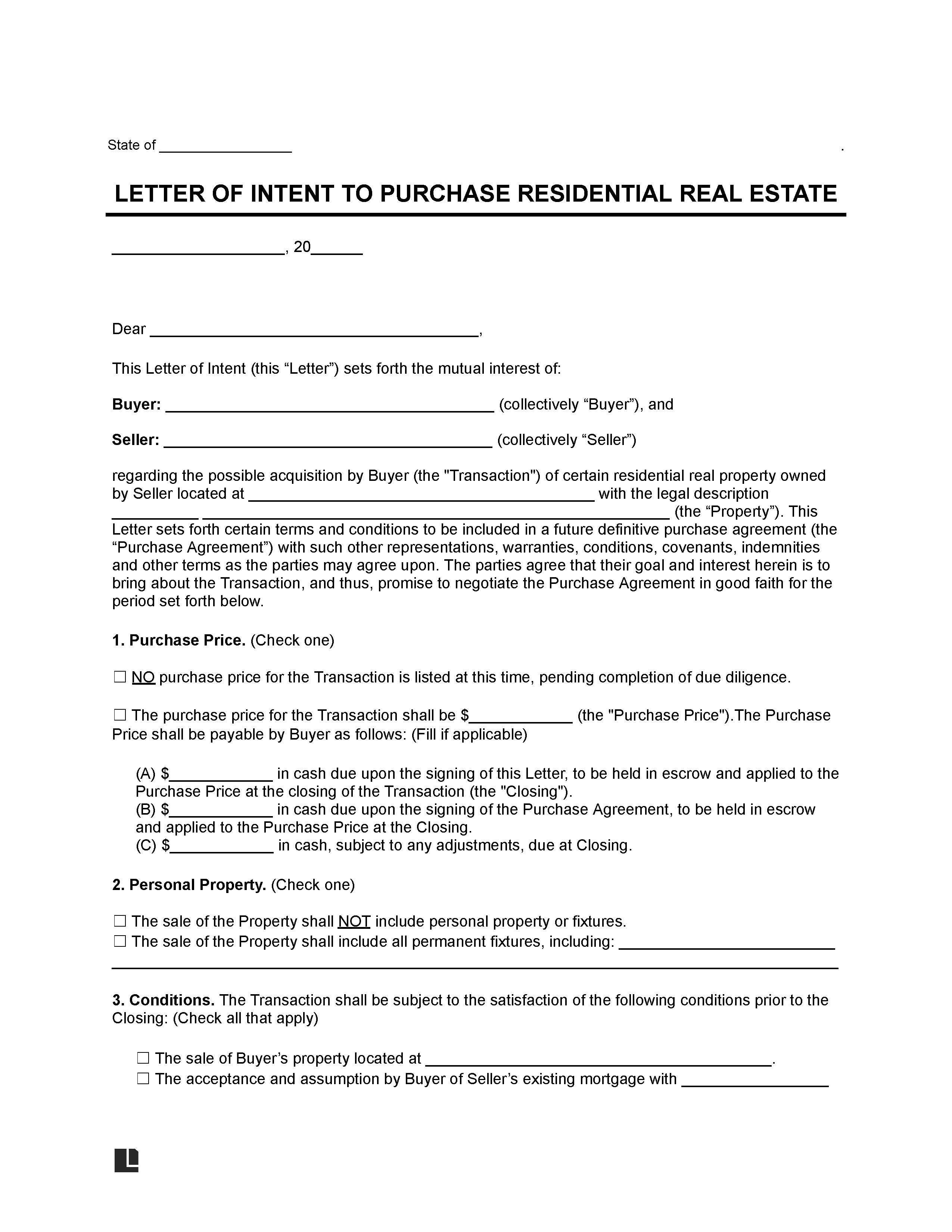A residential purchase letter of intent is a document drafted by a prospective home buyer to formally express their interest in purchasing a residential property. This letter serves as an initial step in the negotiation process, outlining the buyer’s intentions and key financial terms, and often includes conditions that must be met before a formal purchase agreement can be made.
By signing the letter, the seller indicates their willingness to negotiate exclusively with the buyer, aiming to reach a definitive and binding agreement.
Commonly Used Before
- Property Disclosure Statement: Provides potential buyers with the history and current condition of the property.
- Real Estate Purchase Agreement: Outlines the terms and conditions for the sale of residential property.
How to Use
The process involves several strategic steps that ensure a smooth and transparent negotiation process for both the buyer and the seller:
- Step 1 – Initial Property Visit and Evaluation: Allows the buyer to gather crucial information on the property’s condition and suitability, which will inform the terms of the LOI.
- Step 2 – Preliminary Discussions: Help the parties understand their expectations and any specific terms they might have and lay the groundwork for the formal letter.
- Step 3 – Drafting the LOI: The buyer drafts the LOI, clearly stating their intention to purchase the property. The language must be clear and precise to avoid any misunderstandings.
- Step 4 – Review and Revision: This step may involve several rounds of revisions to address any concerns and refine the terms until both parties are satisfied with the document.
- Step 5 – Signing the LOI: While the document is generally non-binding, it signifies a mutual commitment to negotiate in good faith and outlines the key terms that will form the basis of the final purchase agreement.
- Step 6 – Due Diligence Period: After the LOI is signed, the buyer typically conducts due diligence, which includes property inspections, appraisals, and securing financing.
- Step 7 – Negotiation of Final Purchase Agreement: The LOI serves as a reference point, ensuring that the main terms have already been agreed upon, which can streamline this stage of the process.
What to Include
- Statement from the buyer indicating their intention to negotiate the purchase of the property.
- Names and addresses of the parties.
- The property address and the buyer’s financial offer.
- Financing clarifications from the buyer and any related conditions.
- The proposed closing date and the responsibility for closing costs.
- The buyer’s right to inspect the property before finalizing the purchase agreement.
- May include a clause preventing the seller from negotiating with other potential buyers during the negotiation period.
- Signatures from both buyer and seller.
Residential Purchase Letter of Intent Sample
Below, you can download a residential purchase letter of intent template in PDF or Word format.


